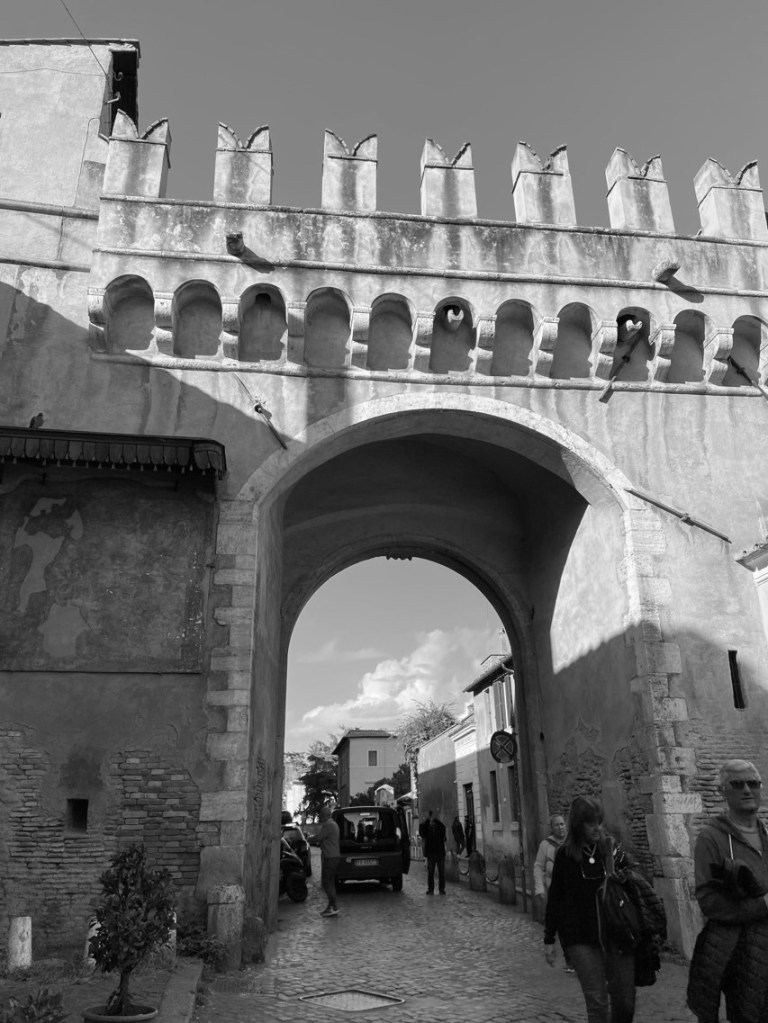Travel Writing
By Vittoria Caroli / Matthew staff || Edited by Sara Segat
Often, we take most of the things as they are, but what if we start paying more attention to their past?
Have you ever wondered what the story of a street could be? I asked myself, I dug into history, and I found out hidden gems and anecdotes.
Since I am a student at John Cabot University, I wanted to know the reason why it is located in Trastevere, one of the most famous and beautiful neighborhoods of Rome, whereas most of the universities are concentrated in other areas of the capital.
John Cabot University was firstly located in Viale Pola 12, having only one class of 31 students. In 1979 it moved to Via Massaua and, finally in 1991, it changed its location in Trastevere.
Our university, as we all know, has various venues, but the main one is the Guarini campus, situated in Via della Lungara, a street that possesses a beautiful history on its shoulders.
Via della Lungara is also called “Via Santa” (Holy Street) because the peregrines used the arch, the Porta Settimiana to reach the grave of Peter. An arch that dates back to the III century. It creates a triangle with the district of Trastevere inside of the Aurelian Walls. Another element that distinguishes the Porta is its name, since it comes from the nearness to the Horti Getae, that have taken the denomination of Septimianum, due to its greatness. A particularity is the pair of VI century religious frescoes on the sides of the arch that become unobserved if whoever passes underneath does not know their existence.
Moreover, in the 20th civic of Via di Santa Dorotea, the street which connects Via della Lungara to Piazza Trilussa, one of the most passionate love stories of the 1500s begins. Raffaello Sanzio, one of the greatest Italian Renaissance painters, and Margherita Luti found their love few steps before the arch that we, as students, cross every day. The historical legend tells us that, on his way to go meeting his friend Agostino Chigi, Raffaello has been amazed by the beauty of the young Margherita, who was brushing her hair while looking out of the window. The so-called Finestra della Fornarina. It was love at first sight. Is there anyone who would not live the same fairytale? Trastevere can brag to be the place where it all happened.
Walking forward, the next historic building that belongs to Via della Lungara is Palazzo Corsini, built at the end of the XV century, wanted by the cardinal Raffaello Riario, nephew of Pope Sisto IV. However, what we see today is the result of various changes that the Queen of Sweden Cristina made to live there, right after her conversion to Catholicism. Palazzo Corsini has been the residence of other exceptional personalities, such as the Italian painter Michelangelo or Erasmo da Rotterdam, a Dutch philosopher. And only in 1736, the building became a property of the Corsini family, since they needed a new house that would have met their new pontifical status, due to the fact that Lorenzo Corsini turned into what we know as Pope Clemente XII. Once again, the homonymous family was not the last one to live there, in fact, in 1883 the whole building has been given as a present to the Italian Realm, becoming the first National Italian Gallery. Today, it hosts several original masterpieces from the 1700s.
Moreover, Palazzo Corsini contains the Accademia dei Lincei, on the grounds of which the Guarini campus is situated.
Right in front of Palazzo Corsini, the questioned street boasts the presence of another wonderful building, the so-called Villa Farnesina. One of the most fascinating Villas in Rome, it was born to be the residence of the Maecenas Agostino Chigi. Most of the paintings that make the rooms of the Villa exceptionally unique have Raffaello, the painter who found love in Trastevere, as their author. One of them, more than the others, deserves to be nominated: the wedding of Amore and Psyche, which alludes to the love story of Agostino and his wife Francesca, the most complicated, yet interesting, love story of that time. This building has also represented the headquarters of the landsknechts, a brutal and violent population who, during the Sacco di Roma in 1527, invaded Rome. The pope, worried about the future of the city, proposed a Treaty, which was not accepted by the invaders. They asked to have the whole neighborhood of Trastevere under their control.
“A via de la Lungara ce stà ‘n gradino chi nun salisce quelo nun è romano, e ne trasteverino” (In Via della Lungara there is a step, and whoever does not touch it, is neither Roman or from Trastevere) is the saying that characterizes Regina Coeli, the prison that contributes to the uniqueness of Via della Lungara. The construction of the building – situated in Via della Lungara 29 – started in 1643, even though it was destined to be a monastery. Only at the end of the 19th century, consequently to the intervention of Agostino Depretis, the Italian Interior Minister, who exposed the need to build a prison as soon as possible.
When Regina Coeli was ready to be opened, Fascism hit; and it is exactly during this period of history that the prison hosted some of the most prestigious Italian personalities.
Starting off with Sandro Pertini, a socialist strongly against fascism who got several convictions after having participated to some actions of the Resistance. What is interesting about his story is that, in 1978, he then became President of the Italian Republic.
Other historic personalities who have been locked up in Regina Coeli were Alcide De Gasperi, the founder of the Christian Democracy and Antonio Gramsci, the initiator of the enemy of the DC, the Communist Party: De Gasperi has been imprisoned from 1927 to 1931 because of “illegal expatriation for political reasons; Gramsci became an inmate in 1926, right after the promulgation of the fascist laws, however he stays in Regina Coeli only for ten days, since on 7th December of the same year he was assigned to another prison in Ustica, an Italian island.
In 1943, the Gestapo, the secret Nazi police, visualized Regina Coeli as a strategic place to try, for the last time, to raze to the ground the Eternal City. Notwithstanding the expectations of the Nazis about the velocity of the attack, the conflict lasted until the beginning of 1944.
This deep jump into history has shown how vast the amount of history hidden behind any small things is. Things that we take for granted. On a larger scale, it should make us understand that we are surrounded by so many particularities which, most of the time, we do not even pay attention to. Moreover, Via della Lungara and all the treasures that it brags, represents just one example of the infinite wonderful buildings, streets and unique items that Rome, our so-called Caput Mundi, has.

Courtesy of Vittoria Caroli
Courtesy of RomaToday

